From Best to Ronaldo: The iconic Manchester United No.7's Valencia will look to emulate
The Ecuador winger was confirmed to be the new owner of the
famous shirt following Michael Owen's departure, but who has excelled
and failed with the jersey over the years?
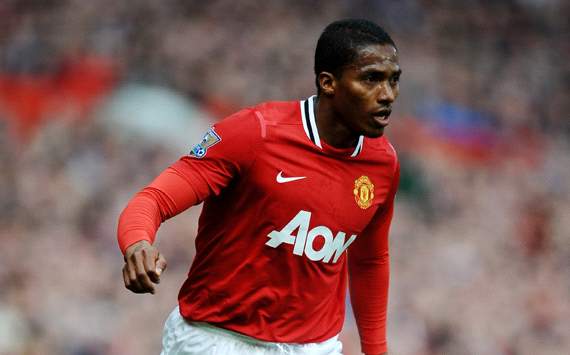
In world football there are few more iconic shirts than Manchester United’s No.7 jersey, with several renowned superstars making it their own while at Old Trafford, and following Michael Owen’s release it now has a new owner: Luis Antonio Valencia.
Ever since his first season at the club, the Ecuadorian has become a fan favourite for a majority of reasons, with his direct and incessant runs at defenders, his powerful physical attributes added to immense pace and his humble, quiet nature off the field.
In the grand scheme of things, allocated squad numbers are a fairly recent phenomena as they were only introduced in 1993, meaning many players wore several different numbers before then. Valencia seems like an exact contrast to the more high-profile players to wear the number on their back, with the 26-year-old not one associated with the limelight like some of his predecessors.
The choice to give the former Wigan man the No.7 jersey will almost certainly be a popular decision due to the fans’ adoration for him, while it may also be seen as a breath of fresh air given the rather glamorous history.
World renowned superstars and those dubbed Sir Alex Ferguson’s worst-ever signing have worn the famous No. 7 shirt for United, and Goal.com takes a look at both sides of that coin.
| GEORGE BEST |
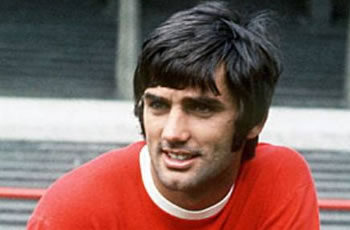 Although Best often played in a similar position to Valencia, the
differences in their general demeanour could not be more contrasting
with the Northern Irishman’s off-field antics heavily publicised.
Although Best often played in a similar position to Valencia, the
differences in their general demeanour could not be more contrasting
with the Northern Irishman’s off-field antics heavily publicised.A serial womaniser and alcoholic, Best was constantly in the public eye due to his extravagant lifestyle which included dating Playboy models, gambling and spending big money on cars amongst other things.
Although a bumpy ride off the pitch, on it Best was more akin to a figure-skater, with everything made to look effortlessly easy and smooth as he would glide past defenders thanks to his immense pace and skill. But his ability to use both feet made him fantastically unpredictable, which undoubtedly helped carve a brilliant goalscoring record.
Best is still the only Northern Irish player to win the Ballon d’Or, while his defining moment in a United shirt saw him lift the European Cup in 1968, scoring in a 4-1 final win over Benfica, but after that the genius’ career began to decline as problems arose.
In Best’s United stint, the only other silverware the club won were two league titles and another two Charity Shields, while he finished as their top scorer in six consecutive seasons before he eventually left the club in 1974 at the age of 27. He went on to play for another 14 clubs, eventually retiring in 1984 and passed away in 2005 after a long battle with liver problems.
| BRYAN ROBSON |
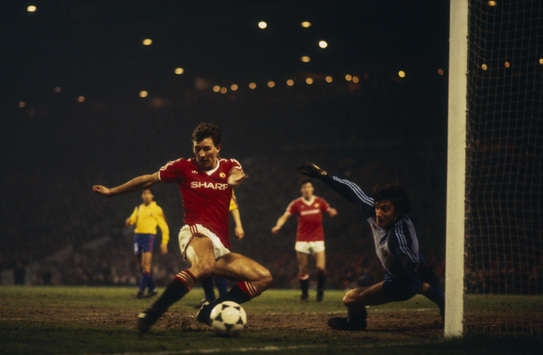 There was not a great deal that Bryan Robson could not do, with the
England international the embodiment of the complete footballer as he
controlled matches and turned them on their heads from his midfield
position.
There was not a great deal that Bryan Robson could not do, with the
England international the embodiment of the complete footballer as he
controlled matches and turned them on their heads from his midfield
position.Famously United’s longest serving captain in the club’s history, Robson’s trademark bursts through the midfield resulted in an impressive goalscoring return, but his anticipation, bravery, competitiveness and stamina also made him a formidable player in his own half.
In 1983 Robson became the first English captain to lift the FA Cup trophy for United, while the following year a move to Juventus nearly came to fruition. However he remained at Old Trafford until 1994, helping his side lift the Uefa Cup Winners' Cup in Rotterdam in 1991, beating Barcelona in the final.
'Captain Marvel' as he was nicknamed, played 461 times for the club, managing an impressive 99 goals, with his last appearance coming in a 0-0 home draw against Coventry City in May 1994. He has ever since been hailed as an all-time great, with a poll of former United players voting him as the club’s best-ever player in 2011.
| ERIC CANTONA |
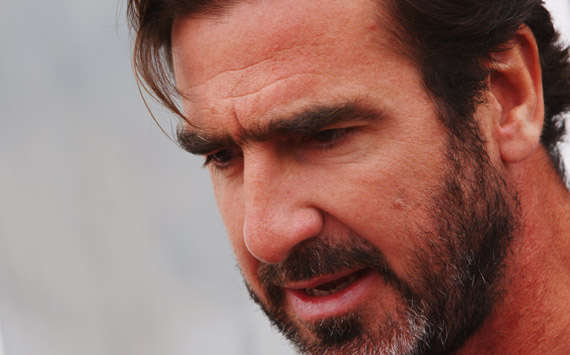
“King Eric” fits more into the mould of Best than Robson, thanks to his eccentric style that some perceived as arrogance, but even though he had a relatively short spell at the club, he is remembered just as fondly.
Cantona received the No. 7 shirt the summer after arriving from Leeds United, a gesture that suggested time was coming to an end at Old Trafford for Robson, who was subsequently given No. 12, and the France international made the fledgling Premier League his play-thing, toying with it for five years as he tantalised defences until he retired in 1997.
Arriving from bitter rivals Leeds, Cantona did not take long to settle into the United team, with the form of Mark Hughes and Brian McClair, as well as an injury to Dion Dublin, ensuring plenty of playing time and he became the first player to win consecutive top-division titles with two different clubs.
Regardless of his achievements at the club, Cantona is likely to be remembered most for his infamous kung-fu kick on a Crystal Palace fan after being sent off, later producing arguably his most memorable and incomprehensible quote: “When the seagulls follow the trawler, it's because they think sardines will be thrown into the sea. Thank you very much.”
Cantona received an eight-month worldwide ban and various fines, while he attempted to leave the club on a number of occasions, but he remained and went on to claim four Premier League titles, two FA Cup wins and three triumphs in the Charity Shield, while he also came third in the 1993 Ballon d’Or.
In terms of legacy, how many other United players can say they have had a film based on them?
| DAVID BECKHAM |
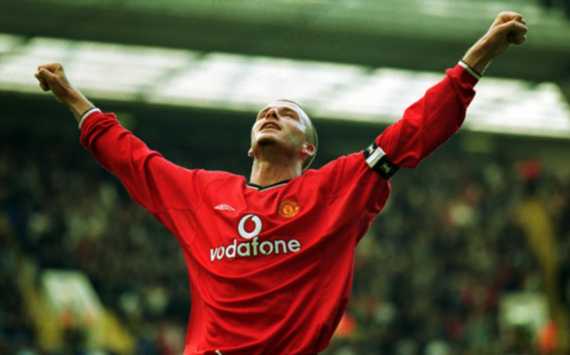
If George Best created the celebrity footballer lifestyle, David Beckham mastered it. His marriage to a former Spice Girl is the main catalyst behind that, according to Sir Alex, who felt getting married was a bad move for the midfielder.
The paparazzi and press followed Beckham everywhere he went with the England midfielder becoming more well-known by the match, and one in particular really put him on the map as he scored from the halfway line against Wimbledon in 1996.
Beckham was fully immersed in the United first-team by the 1996-97 season and by mid-2000 he had already won four Premier League titles, with the third being the most famous as it came as part of the club’s 1999 treble, adding to the Champions League and FA Cup triumphs. Beckham’s set-piece deliveries were a key part of the European success against Bayern Munich.
Controversy often reared its ugly head in the presence of Beckham too, with his sending off for kicking Argentina’s Diego Simeone at the 1998 World Cup the obvious example, and he was subsequently vilified in England as the Three Lions were knocked out of the tournament.
The more attractive to the media Beckham got, it seemed the more keen Ferguson was to be rid of him. And after reports of rifts between the pair Becks left to join the ‘Galacticos’ era at Real Madrid in 2003 after making 346 appearances in the Premier League and Champions League for United.
| CRISTIANO RONALDO |
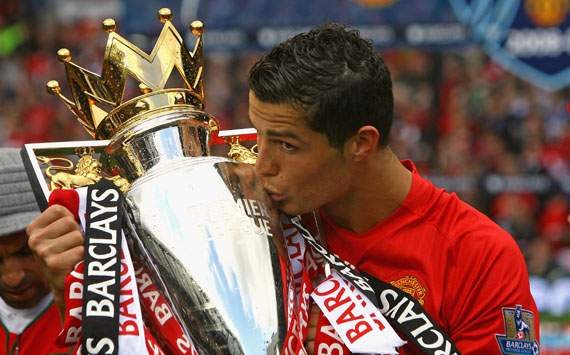
United’s first-ever Portuguese player was signed soon after the departure of Beckham and effectively served as his direct replacement, but many fans were bemused as to why United paid over £12m for a relatively unknown player. However, after a 30-minute cameo in a 4-0 win over Bolton, all was clear.
The lanky winger with peculiar chewing gum-like strands of white in his hair came on to the pitch and was instantly tricking his way past defenders, producing step-overs as if negotiating a minefield and dazzling the Bolton defence, with ‘Ronaldo 7’ shirts popping up everywhere within the coming weeks.
Silly acts of petulance and the preference to beat his man twice rather than pass were the young winger’s weakness in his early years, but he matured to great effect, scoring and assisting a total of 127 goals in all competitions in his final three years at the club, while he managed three Premier League titles, one Champions League win and five other trophies at Old Trafford.
Ronaldo’s successes at United were not only team-related as he also become the first-ever Premier League player to win the Fifa World Player of the Year award, and the club’s first Ballon d’Or winner since Best in 1968. But the day all United fans dreaded eventually came in June 2009 as the superstar signed for Real Madrid for a world record £80m, following in the footsteps of Beckham.
| THE FLOPS |
Michael Owen
From day one Michael Owen was fighting a losing battle to become a significant player at United. The fact he was previously regarded as a Liverpool legend was one problem, but he was attempting to wrestle a first-team place away from Wayne Rooney and Dimitar Berbatov.
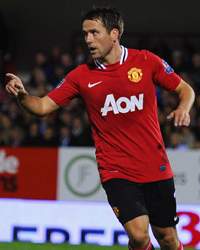 Injuries
were always an issue for Owen at United as it hampered his involvement.
The emergence of Danny Welbeck and Federico Macheda also threatened the
former Real Madrid man's influence, although an injury-time winner
against Manchester City at Old Trafford was a real highlight.
Injuries
were always an issue for Owen at United as it hampered his involvement.
The emergence of Danny Welbeck and Federico Macheda also threatened the
former Real Madrid man's influence, although an injury-time winner
against Manchester City at Old Trafford was a real highlight.The jubilation at Old Trafford for that goal was obvious and Owen will undoubtedly be remembered most for that during his time at United, while he also grabbed an impressive hat-trick away to Wolfsburg in the Champions League in December 2009. However injuries persisted for the rest of the season, and he missed the final three months.
In his second year he claimed his first-ever Premier League winners medal after competing in just 11 matches. However, this past campaign Owen managed just one Premier League appearance with fitness problems dogging him throughout, and United decided against renewing his contract for a fourth term. Perhaps he is a signing that should never have happened and he rarely looked good enough, but he will at least be remembered for that goal against City.
Ralph Milne
Considering the fact squad numbers were not allocated until 1993, Milne was never an ‘official’ No. 7 like Beckham or Ronaldo, but he did wear the shirt during his three years at the club.
The midfielder was tipped to have a big future by his coach at Dundee United, Jimmy McLean, but problems with his mentality and attitude meant his potential was never truly realised, despite eventually finding himself at United.
Milne was signed by the Red Devils as they searched for a first title win since 1967, but a poor season in which the signing from Bristol hardly contributed saw Ferguson’s side finish well down in 11th, a year after finishing second.
A common consensus among United fans is the view that Milne is among the club’s worst-ever players, while Ferguson regards him as his worst signing after paying £170,000 for the Scot.
Milne later admitted to suffering from alcoholism and an addiction to gambling, adding that this was an ongoing problem even during his playing career, problems McLean feels had a massive effect on his success, or lack of.
Keith Gillespie
As a part of the same FA Youth Cup winning team as Ryan Giggs, David Beckham, Paul Scholes and Gary Neville, Gillespie was another that promised much, with his pace and trickery down the wing his trademark.
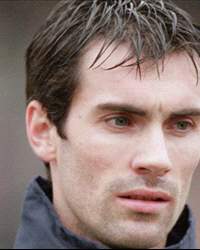
The Northern Irishman made his debut against Bury in 1993, a match in which he also scored, but Gillespie’s main problem was the presence of Andrei Kanchelskis in the United first-team, the powerful Russian winger who rarely looked displaceable.
A loan to Wigan Athletic drew optimistic conclusions as he managed four goals in eight matches. But the reliability of Kanchelskis meant Gillespie had to make the most of fleeting appearances, and eventually he moved on, joining Newcastle United in a deal that saw Andrew Cole move to Old Trafford.
Probably Gillespie’s biggest moment in a United shirt saw him score in a 2-0 win over his future employers, Newcastle, a win that ensured Ferguson’s side replaced the Magpies at the top of the Premier League table.
Gillespie was reportedly offered the chance to return to United once Kanchelskis left, but he remained at Newcastle, with Ferguson deciding to give Beckham his chance.
And the rest, as they say, is history.
Ashley Grimes
John O’Shea made quite the living off the back of his versatility at Old Trafford, rarely excelling in a specific position, but was fairly steady in a number of different areas. Versatility was also one of the main attributes of Grimes during his six-year stint at United.
The Republic of Ireland international played at left-back and in midfield for United. He made 90 appearances for the club after joining in 1977, having previously failed to earn a contract in an earlier trial.
Grimes never held down a first-team place and suffered in particular when Dave Sexton was replaced by Ron Atkinson as manager. ‘Big Ron’ brought in his own signings, one of which was Bryan Robson, an acquisition that ultimately doomed Grimes and had him headed for the Old Trafford exit.
The Dublin-born player scored his first two goals for United in consecutive matches, the first against QPR in April 1978 at Old Trafford, and the second coming in a 3-0 win over West Ham, while he managed at least one goal in each of his six seasons at the club.
Although he arrived 10 years after the club’s last league title and 15 years before their next, Grimes did not leave United without winning silverware as he picked up an FA Cup winners medal from the 1983 final, albeit as an unused sub, while he went on to play for Coventry, Luton, Stoke and even a spell in Spain with Osasuna.
source: http://www.goal.com/en-gb/news/2896/premier-league/2012/07/04/3219347/from-best-to-ronaldo-the-iconic-manchester-united-no7s
Tiada ulasan:
Catat Ulasan